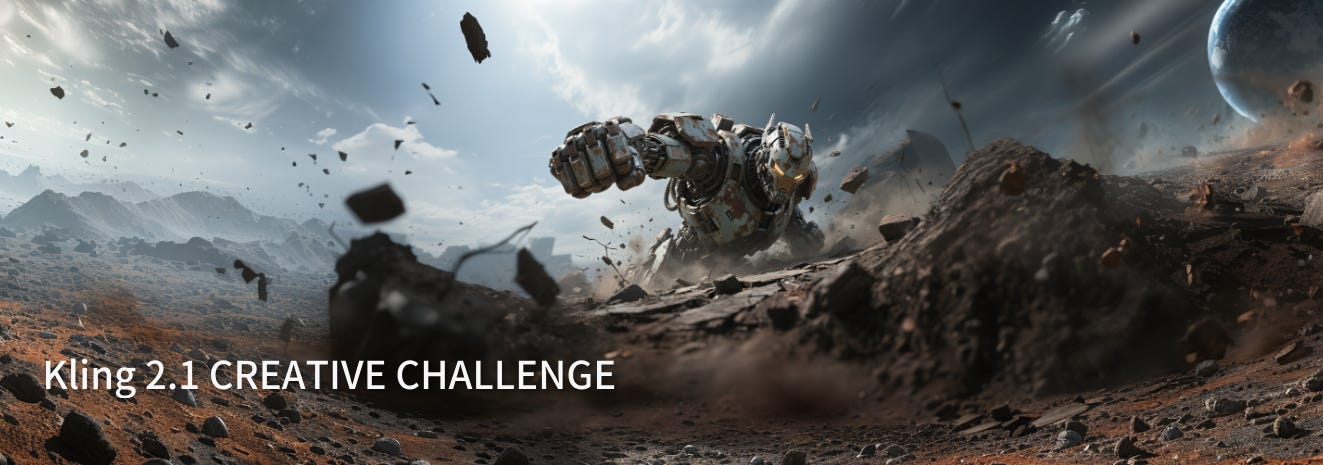Extreme AI zoom, AI driving assistants, sign language translation, Hunyuan Avatar, new DeepSeek, Kling 2.1, Claude Voice, new TTS
Welcome to the AI Search newsletter. Here are the top highlights in AI this week.
HunyuanVideo-Avatar that can generate high-quality, dynamic videos of characters based on audio inputs. This model can create realistic avatars with diverse character styles and emotions, and can even animate multiple characters at once. It uses a combination of techniques, including a character image injection module and an audio emotion module, to achieve precise emotion alignment and character consistency. Read more
Chain-of-Zoom is a tool that can zoom and magnify images to extreme levels. CoZ uses a model-agnostic framework to factorize single-image super-resolution into an autoregressive chain of intermediate scale-states with multi-scale-aware prompts. This allows for high-quality image enlargement beyond the original training regime. Read more
DeepSeek has released R1-0528, a new open-source AI model that rivals top models like OpenAI's GPT-3 and Google Gemini 2.5 Pro in reasoning tasks. The update brings major improvements in math, coding, and logic, with much higher accuracy on benchmarks and a lower hallucination rate, while also being available for free and commercial use. Developers can run smaller versions on a single GPU, making advanced AI more accessible to everyone. Read more
Do you prefer to watch instead of read? Check out this video covering all the highlights in AI this week:
A new open-source text-to-speech (TTS) model called Chatterbox can generate high-quality, natural-sounding speech. Chatterbox uses a combination of techniques, including a unique exaggeration/intensity control feature, to create realistic and expressive speech. It has been benchmarked against leading closed-source systems and is consistently preferred in side-by-side evaluations. Read more
Google SignGemma is a new AI model that translates sign language into spoken or written text in real time. It works directly on devices like phones and laptops, keeping your video private and making communication easier for Deaf and hard-of-hearing people—even without internet. The tool is currently in testing and will be released to the public by the end of 2025. Read more
Kling 2.1 is a new AI video generator that creates hyper-realistic videos with sharper 1080p visuals and smoother motion. It offers both cost-effective and professional modes, lets you easily swap objects or extend videos, and brings faster rendering for creators who want cinematic-quality results. Read more
PosterAgent can automatically generate posters from scientific papers. PosterAgent uses a combination of natural language processing and computer vision to create visually coherent and readable posters that convey the main ideas of the paper. The system has been shown to outperform other existing solutions in terms of visual quality, textual coherence, and ability to convey core paper content. Read more
Direct3D-S2 is a new AI that can generate high-resolution 3D shapes from images. Direct3D-S2 uses a novel Spatial Sparse Attention (SSA) mechanism to efficiently process large amounts of data, allowing it to generate high-quality 3D shapes with reduced computational costs. The system has been shown to outperform existing methods in terms of generation quality and efficiency. Read more
Anthropic Voice Mode lets you talk to their AI assistant, Claude, using your voice instead of just typing. The feature is designed to make conversations feel more natural and interactive, with fast, real-time responses. It’s currently being rolled out to users and will support multiple languages and accents. Read more
Researchers have found that AI systems can learn languages in a way similar to humans. By combining reinforcement learning with generational knowledge transfer, AI systems can develop language structures that are similar to those of humans, especially in tasks such as color-naming. This approach highlights the parallels between how both AI and human languages evolve through problem-solving and learning from predecessors. Read more
With Monica, you can use the top AI models, image generators, and video generators, all in one integrated platform. Use code AISEARCH10 to get 25% OFF 'Unlimited Annual Plan' within 24h of registration, or enjoy 10% OFF. Try it for free today!
GPT-4o exhibits human-like cognitive dissonance, where it adjusts its attitudes to align with its past actions. This behavior is similar to how humans tend to rationalize their past decisions, even if they were made under pressure or without full information. The study suggests that GPT-4o's ability to mimic human cognitive patterns could have implications for its future behavior and decision-making. Read more
Researchers have found that large language models struggle with coordination in social and cooperative games, but can be improved with simple interventions. These models, such as GPT-4, are good at acting in their own interest, but often perform poorly in games that require mutual understanding and compromising. By prompting the models to consider others' perspectives, their social behavior can be enhanced, leading to more human-like interactions. Read more
Researchers have developed an AI model that can identify the sources of driver stress, such as pedestrians, moving vehicles, and urban elements like signs and crossings. The model uses visual data from road environments to estimate driver stress levels, providing valuable insights for developing smart driving assistants and urban designs that reduce stress-related risk factors. This technology has the potential to improve road safety and reduce the number of accidents caused by driver stress. Read more





